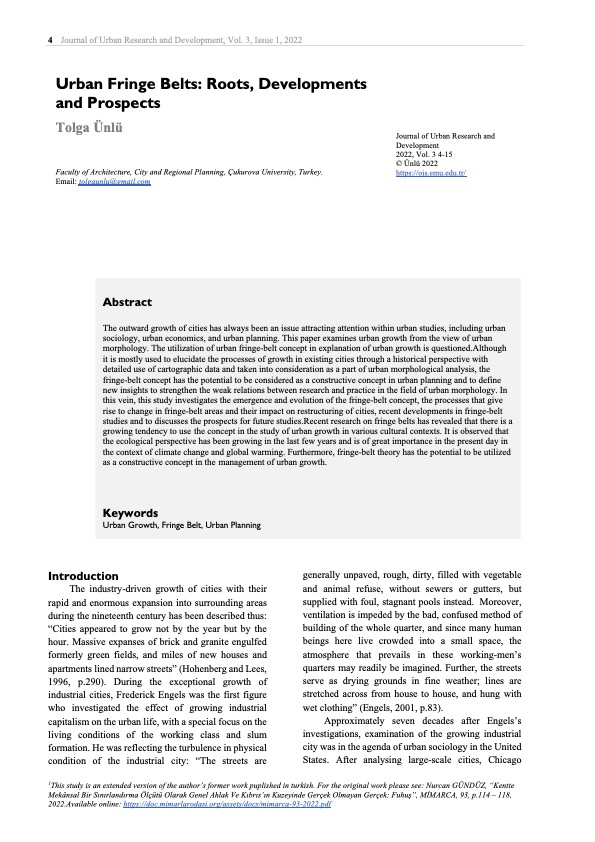Urban Fringe Belts: Roots, Developments and Prospects
Keywords:
Urban growth,, Fringe belt,, Urban planning,Abstract
The outward growth of cities has always been an issue attracting attention within urban studies, including urban sociology, urban economics, and urban planning. This paper examines urban growth from the view of urban morphology. The utilization of urban fringe-belt concept in explanation of urban growth is questioned.
Although it is mostly used to elucidate the processes of growth in existing cities through a historical perspective with detailed use of cartographic data and taken into consideration as a part of urban morphological analysis, the fringe-belt concept has the potential to be considered as a constructive concept in urban planning and to define new insights to strengthen the weak relations between research and practice in the field of urban morphology. In this vein, this study investigates the emergence and evolution of the fringe-belt concept, the processes that give rise to change in fringe-belt areas and their impact on restructuring of cities, recent developments in fringe-belt studies and to discusses the prospects for future studies.
Recent research on fringe belts has revealed that there is a growing tendency to use the concept in the study of urban growth in various cultural contexts. It is observed that the ecological perspective has been growing in the last few years and is of great importance in the present day in the context of climate change and global warming. Furthermore, fringe-belt theory has the potential to be utilized as a constructive concept in the management of urban growth.


